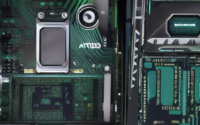LiDAR Applications Across Industries
LiDAR Applications Across Industries
Introduction to LiDAR Technology:
LiDAR, which stands for Light Detection and Ranging, is a remote sensing method that uses light in the form of a pulsed laser to measure variable distances to the Earth. This technology is widely used for creating 3D representations of the Earth’s surface and is a key tool in various industries for mapping, surveying, and monitoring. LiDAR systems can provide accurate and detailed data, making them essential for applications that require precise measurements.
LiDAR in Autonomous Vehicles:
One of the most well-known applications of LiDAR technology is in autonomous vehicles. LiDAR sensors mounted on self-driving cars use laser pulses to create detailed 3D maps of the vehicle’s surroundings in real-time. These maps are then used to navigate the vehicle safely, detect obstacles, and avoid collisions. LiDAR plays a crucial role in helping autonomous vehicles ‘see’ the world around them and make split-second decisions to ensure passenger safety.
LiDAR in Agriculture:
LiDAR technology has revolutionized the agricultural industry by providing farmers with precise data for crop monitoring and management. By using LiDAR sensors mounted on drones or tractors, farmers can gather detailed information about crop health, soil moisture levels, and plant height. This data helps farmers make informed decisions about irrigation, fertilization, and harvesting, ultimately improving crop yield and reducing waste.
LiDAR in Urban Planning:
Urban planners and city officials rely on LiDAR technology to create accurate maps and models of urban areas for development projects. LiDAR data is used to assess terrain, analyze building heights, and visualize infrastructure networks. By leveraging LiDAR technology, urban planners can simulate different scenarios, optimize city layouts, and make informed decisions to improve urban environments and sustainability.
LiDAR in Archaeology:
In the field of archaeology, LiDAR technology has been instrumental in discovering ancient structures and artifacts hidden beneath the Earth’s surface. LiDAR sensors mounted on aircraft can penetrate dense foliage and map terrain features with high precision. Archaeologists use LiDAR data to identify potential archaeological sites, plan excavations, and uncover hidden historical treasures without disturbing the surrounding environment.
LiDAR in Environmental Conservation:
Environmental conservation efforts benefit greatly from LiDAR technology, which enables researchers to monitor and protect ecosystems with unparalleled accuracy. LiDAR data is used to track changes in forest cover, assess biodiversity, and measure carbon storage. By analyzing LiDAR images, conservationists can identify areas at risk, plan conservation strategies, and monitor the impact of human activities on fragile ecosystems.
Conclusion:
LiDAR technology continues to revolutionize various industries by providing accurate and detailed data for a wide range of applications. From autonomous vehicles and agriculture to urban planning and environmental conservation, LiDAR plays a critical role in enhancing efficiency, safety, and sustainability. As technology advances and LiDAR systems become more affordable and accessible, we can expect to see even more innovative applications in the future.

